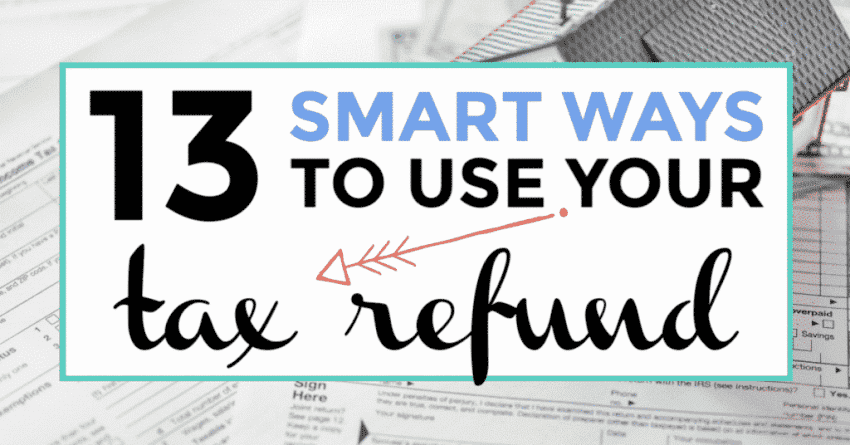Our website is supported by our users and contains affiliate links. We get paid when you purchase or sign up for anything through those links. Read the full disclaimer for more information.
Last Updated on November 30, 2020 by Yovana
Getting an income tax refund this year? Good for you! Just don’t blow it.
It’s so easy to think of this as a windfall, or as “free” money. But that was your money to begin with – you worked for it last year, remember?
Uncle Sam took some of it out, and now he’s giving some back.
Some money experts say getting a refund means you’re doing it wrong. That is, it would be better to adjust withholding and then either use the “extra” funds in consumer-savvy ways (more on that in a minute) or invest them. And it could be a lot: Last year the average refund was $3,120.
Then again, some would rather get a refund because they can’t trust themselves to invest consistently throughout the year. If that’s you, congratulations! You know yourself and are playing to your strengths.
Now: Build on that self-awareness a little further by not blowing the refund! A good personal finance rule is to spend 10 percent of any windfall and use the rest for something that will make a real difference in your life.
Yes, I know, it’s not a windfall. But for the purposes of this article, let’s pretend it is and make plans for the smartest use of this sudden cash infusion.
Let’s look into each of these smart ways to use your tax refund in a bit more detail.
Pin it for later!
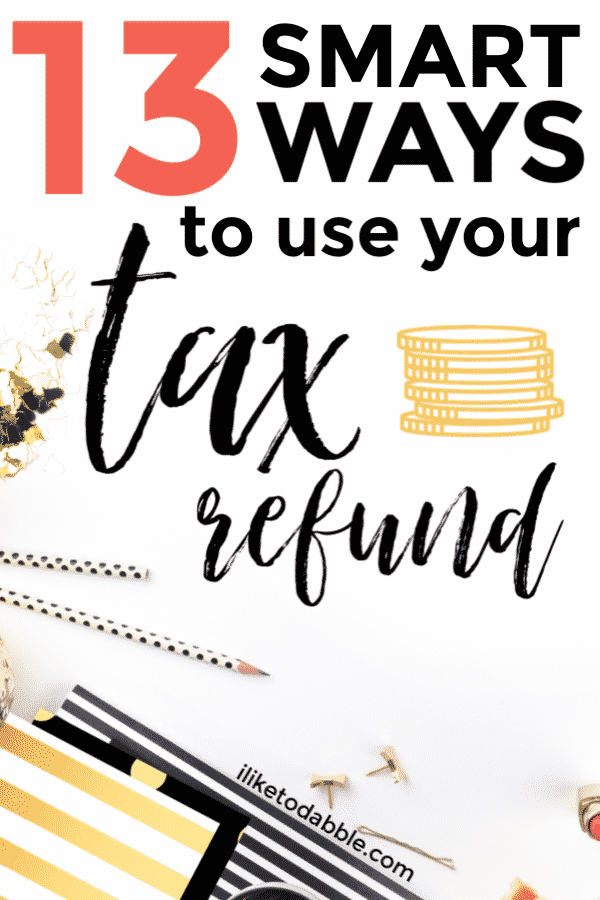
Table of Contents
1. Pay down your debt
This one’s a no-brainer: When you have debt, you pay interest. Don’t do that! The faster you pay down your obligation, the more money you’ll have in the long run.
It’s unlikely that an income tax refund will vanquish the average student loan balance in one fell swoop. But what about credit card debt or some other kind of consumer obligation?
Maybe you got your car at one of those buy-here-pay-here places (ouch) or financed your living room furniture. Throw the income tax refund at your debt and you’ll be one step closer to solvency.
Track your debt, spending and net worth all-in-one with an app like Personal Capital. With their award winning financial tools you can look at all your accounts in one place as well as plan for retirement and see how your investments are doing with their Investment Checkup.
Related post: How One Woman Paid Off $43,544 In Debt to Meet Elton John
2. Build your emergency fund
For all you newbies: An emergency fund is the cash you set aside for unanticipated expenses like car repair or unemployment. When life throws a curveball at you – and it will! – being able to pay cash helps keep you from sliding into debt.
Some people say you need three to six months’ worth of living expenses in your EF. That’s a nice goal, but don’t let it scare you. Just focus on building the fund as regularly as you can; even $500 can make a big difference.
For tips on finding “extra” money in even the tightest of budgets, see the “Challenge Yourself to Save” chapter from Donna Freedman’s first book “Your Playbook For Tough Times“; it’s available for free as a Google doc. (Editor’s note: I’ll be reviewing both of Donna’s books in the near future – and giving away copies to some lucky reader.)
Don’t have an EF yet? Use your income tax refund to start one. Pro tip: Online banks are offering much higher interest than most brick-and-mortars.
Incidentally, an EF is not to be used for things like holidays (which happen at the same time every year and are therefore anticipated) or vacations (you need a separate fund for those).
Related post: Money Saving Challenge: How to Save $1,000 in 10 Weeks
3. Start a retirement fund
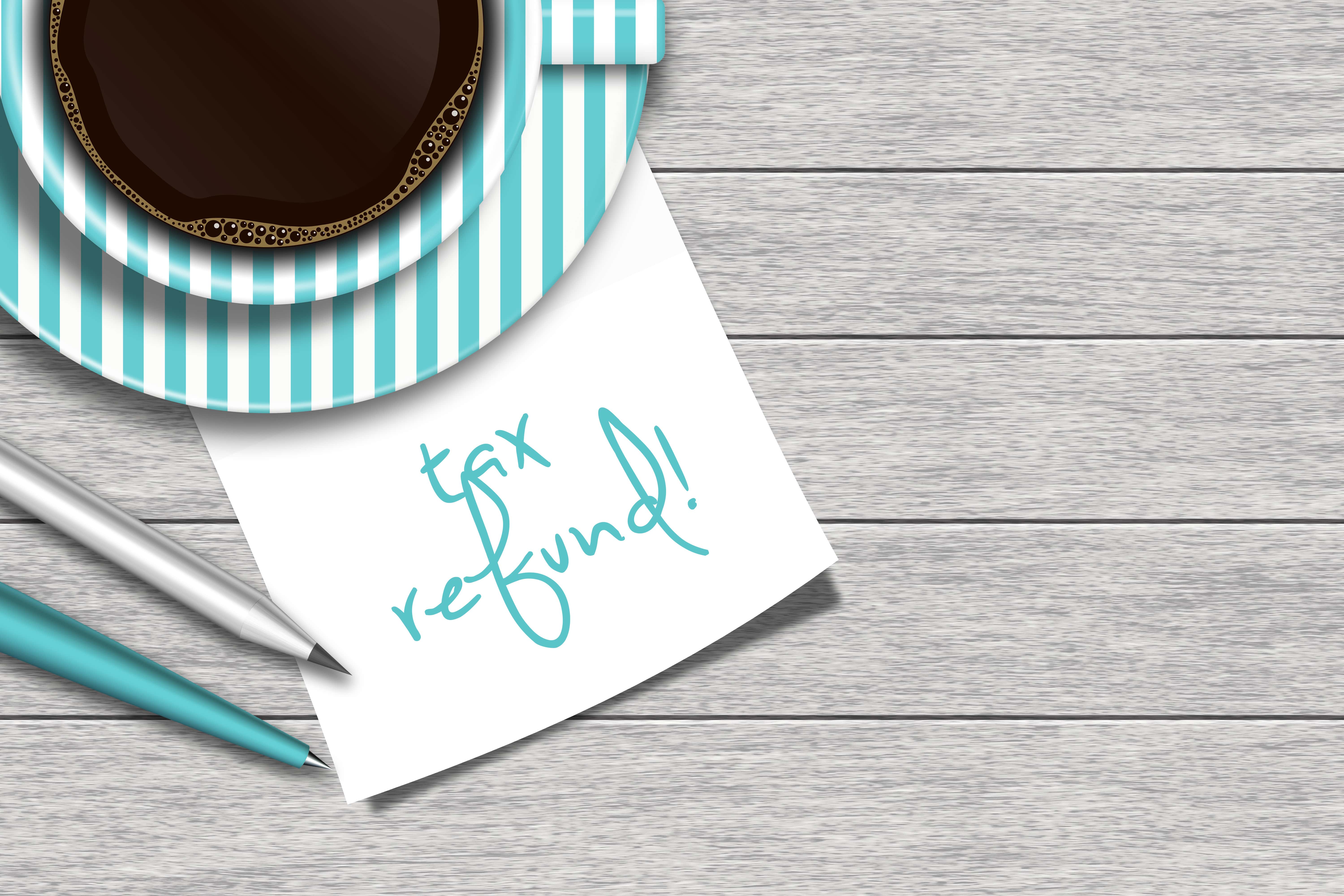
This could be contributing to a workplace plan such as a 401(k), especially if there’s a company match. Don’t leave money on the table!
No plans at work? Some find that Roth IRAs are the simplest way to go, but more than one option exists. Learn more at USA.gov/retirement or at reputable PF blogs.
Or put some in retirement and the rest into other investments. This might be the go to option for you if you already maxed out your contributions for the year. (Which if so, wow you are an early overachiever! )
My recommended apps for beginner investors:
- Acorns invests your spare change for you, making your beginner investments almost effortless. Use “Roundups” and “Found Money’ along with many more features on the app for maximum investing power. Register for Acorns with this link and get a $5 bonus to start investing with!
- Stash consists of ETF’s for a minimum investment of $5. You automate your daily, weekly or monthly investment, track your retirement and tons more. Get $5 of Stash today with my link.
- I have recently started using M1 Finance and am really starting to love it. M1 Finance is 100% free with automatic rebalancing of your portfolio and tax minimization strategies. But my favorite feature on this app has to be their research section.
Related post: 5 Simple Steps to Get Your Finances on Track
4. Put it into a CD
Those online banks, some banks and credit unions are paying more for a certificate of deposit than for savings. If your emergency fund is at a comfortable size and you feel can put the refund away for a couple of years, you’ll be pleasantly surprised at the interest that accumulates.
Related post: How to Create A Budget When You Are Horrible With Money
Sign up to get your free budget planner!
Effectively manage your finances and grow your savings.
5. Take care of yourself

According to a J.P. Morgan Chase study, up to 64 percent of income tax refunds gets spent on deferred medical care. Not surprising, given how high deductibles can be.
If you’ve been putting off health care, please apply the refund toward getting yourself looked at. It’s much easier to fix a small problem than a big one, or to prevent a problem from happening in the first place.
This is especially true if you don’t have dental coverage. For example, the cavity you’ve been ignoring could eventually turn into an abscess. (Um, ewwa!) Much cheaper to fill it than to figure out how to pay for a root canal.
Pro tip: Ask if there’s a discount for paying cash. My dentist takes 5 percent off.
Related post: How to Save Money on Healthcare
6. Take care of yourself some more
Do your feet hurt? Maybe your back does, too? Get shoes with good support.
Buy any other things you need, too, such as a decent winter coat, good rain gear or boots. With the right gear, bad weather is a lot easier to handle.
Use a rewards app like Ibotta or Ebates and get cash back for the purchases. You will also get a $10 bonus when signing up for either one to it’s a win-win!
Related post: 6 Simple Ways to Stop Stressing About Money and Enjoy Life
7. Take care of your pet
How long has it been since your animal companion had a checkup? Again, it’s easier to prevent a problem than fix one, or at least easier to handle a small problem than a veterinary crisis.
Again: Ask if you can get a discount for paying cash at the time of service.
Related post: How to Save Money on Pet Care
8. Take care of your home
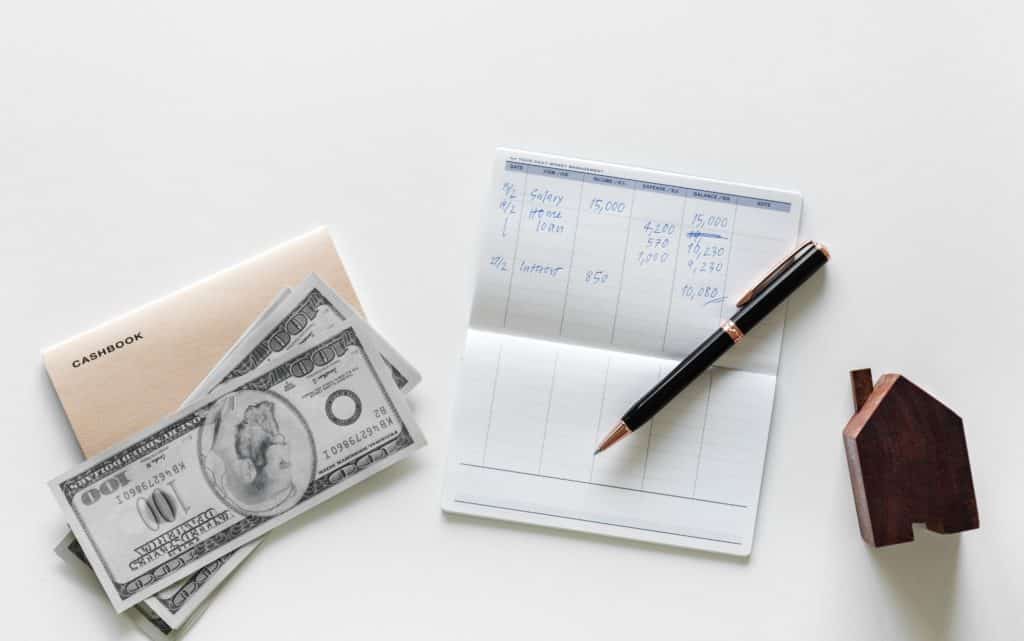
Use some of your newfound money to pay for things like energy-efficient light bulbs, low-flow showerheads, faucet aerators or improved insulation. If it’s a really big refund and you’ve been saving for energy-efficient appliances or better windows, start looking for the best deals.
Related post: High Cost of Living: How Do People Afford to Live in Expensive Areas?
9. Prepay your car insurance
You’re getting the best deal possible, right? If not, do a quick search for quotes at a site like Money Talks News or NerdWallet.
Next, find out if paying for the whole year will get you an even better deal. You might save only $20 or $30 bucks, but that’s money that can go into your EF or toward paying off your credit card faster.
10. Get your vehicle serviced

Take your hoopty in for an all-over checkup and when the bill arrives, remind yourself that – once again – preventing a problem is so much cheaper than dealing with a car crisis.
Also: Stop at the auto supply store on the way home and get a gallon of windshield washer fluid, before you need it – gas stations and convenience stores mark it up because they can. (When your fuel does run low and you need a fill up, install the Dosh app to get cash back for gas. Read our full review of the app here.)
Related post:86 Genius Tips to Save Money Every Day
11. Or get your bike looked at
Riding to work? How green of you!
Many bicycle owners care for their wheels themselves on a regular basis. If that’s not you, then you’re riding on borrowed time. Take your baby into the shop for some tender loving care.
If you don’t have a tire repair kit, pick one up. Consider springing for head- and tail-lights and reflective gear, too.
12. Price transit passes
If you use public conveyances, see if the transit authority offers a deal for paying by the week, month or year. Even if the difference is relatively small, that’s still money that can go toward a financial goal.
13. Build a pantry
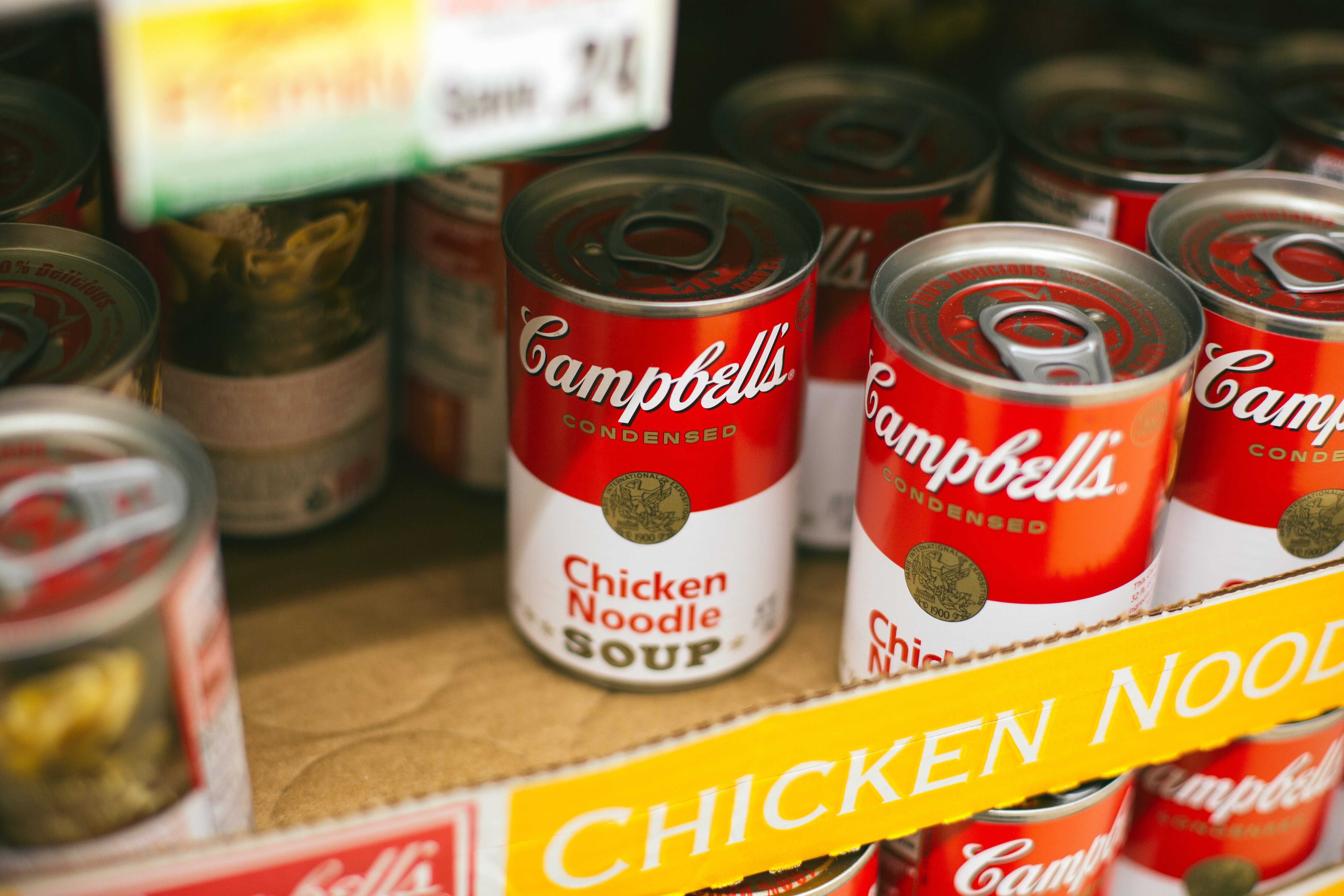
Watch for sales on stuff you use all the time and stock up. Having a nice big stash of paper products, cleaning supplies, cat litter and toiletries saves you at the time of the sale and also later on, because you won’t be at the 7-Eleven at 10 o’clock at night, paying an arm and a leg for cat food or toilet paper.
Stock up on foodstuffs, too, preferably on sale. Having a cupboard and freezer full of pasta, beans, cereal, tuna, canned tomatoes, frozen veggies and such means you’ll order less takeout.
Pro tip: If you know someone with a Costco membership, ask if they’ll take you along the next time they go shopping. You can buy them a $1.50 hot dog afterward.
If you hate going grocery shopping and figuring out the best meals for your buck, use a grocery delivery and meal plan service.
Grocery and meal plan services I recommend:
- $5 Meal Plan: For just $5 a month they will send you weekly meal plans, costing less than $2 per person. They also offer specialty plans in case you have any dietary restrictions. Click here to check out the service for free for the first two weeks!
- Eat at Home Meal Plans: The membership includes access to all four of their meal plans including Traditional, Wholesome Traditional, Slow Cooker/ Instant Pot, and No Flour, No Sugar. For just $7 a month (with their annual plan) you get color coded lists so you can easily plan weeks ahead, minimizing shopping trips. The plan tells you EXACTLY what to get at the grocery store so use an app like Instacart to do the rest for you! Try out some of their sample menus for free.
- Instacart: Instacart is this amazing grocery delivery service I have utilized one or twice when I am working from home all day and don’t have time to go to the grocery store myself. Instacart delivers groceries from local stores in two hours. Choose from stores like Aldi, Target, Costco and more. The best thing about them is you can try them today for FREE!
Related posts: Frugal Living: 26 Tips to Live Big on a Small Budget
10 Eco Friendly Products From Amazon to Help You Live A More Sustainable Lifestyle
45 Life Hacks to Save You A Ton of Money
This post was written by Donna Freedman, longtime journalist and the author of the Your Playbook For Tough Times books. She is also a writing coach and the creator of the Write A Blog People Will Read online course.
Sign up to get your free Money Saving Challenge Tracker printable!
Save $100 a week during the 10 week $1,000 Money Saving Challenge and set yourself up to be a money saving queen!

Daniella is the creator and author of iliketodabble.com. When their wife Alexandra and them aren’t globetrotting or playing with their 7+ animals, they are dabbling and working towards a future of financial freedom.

